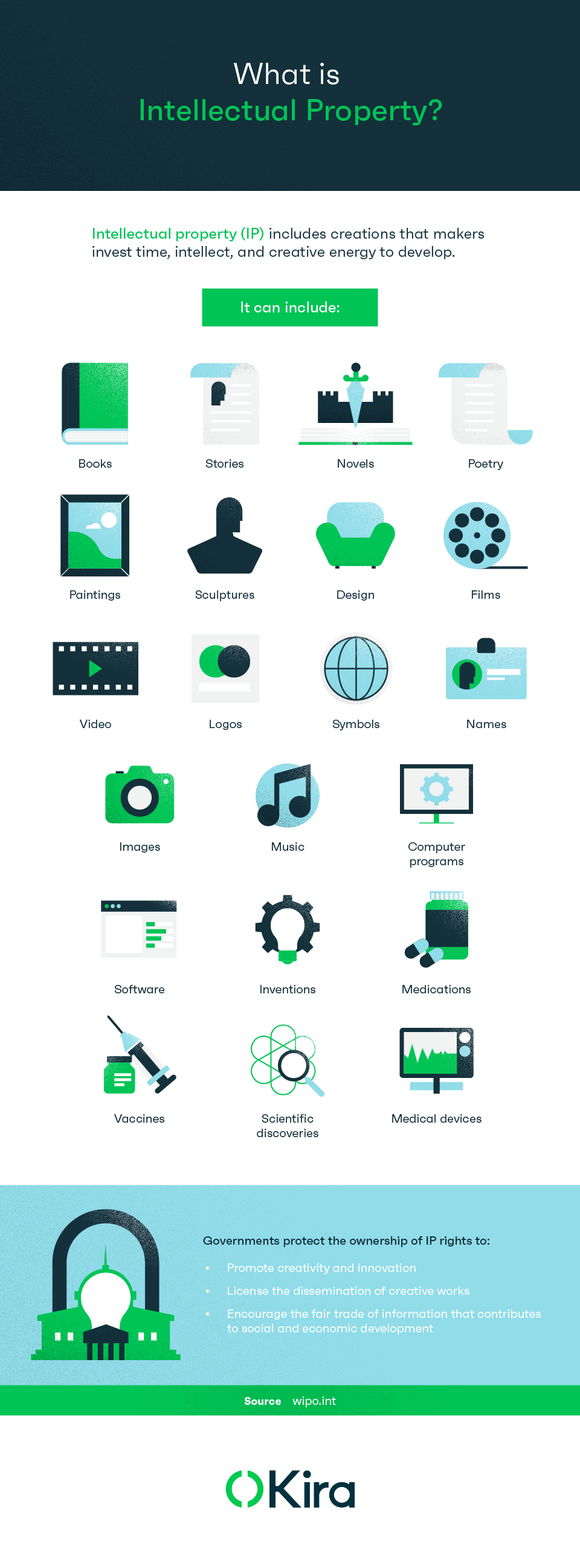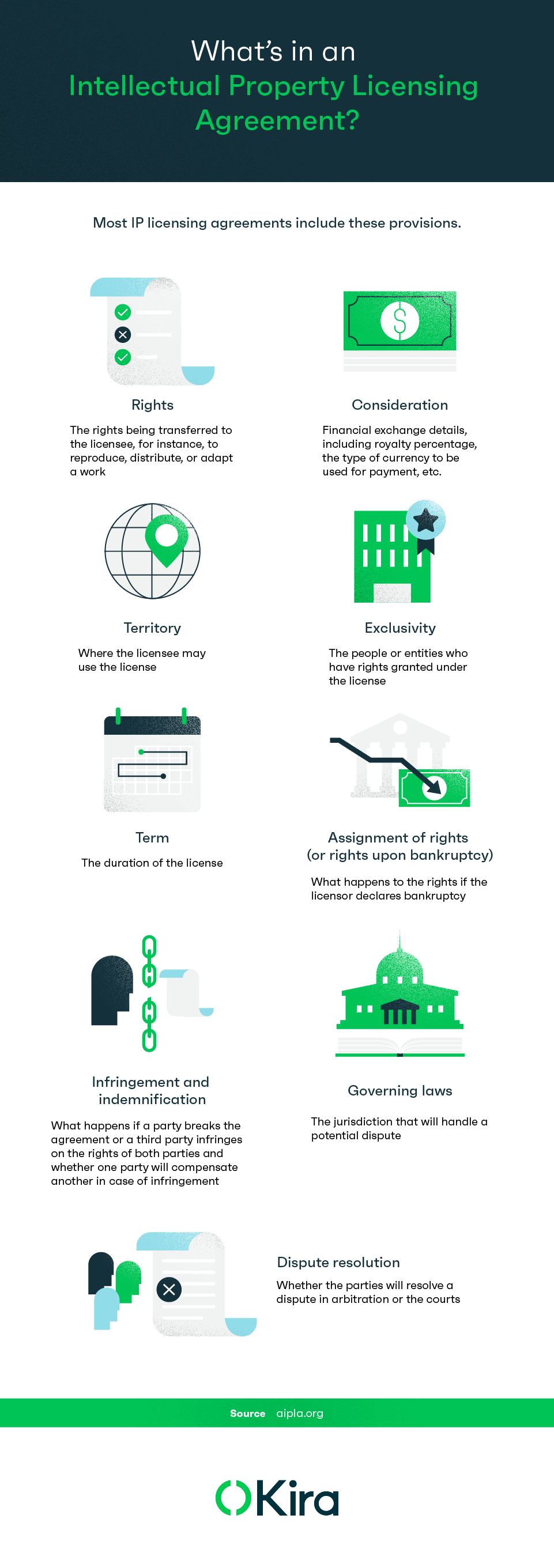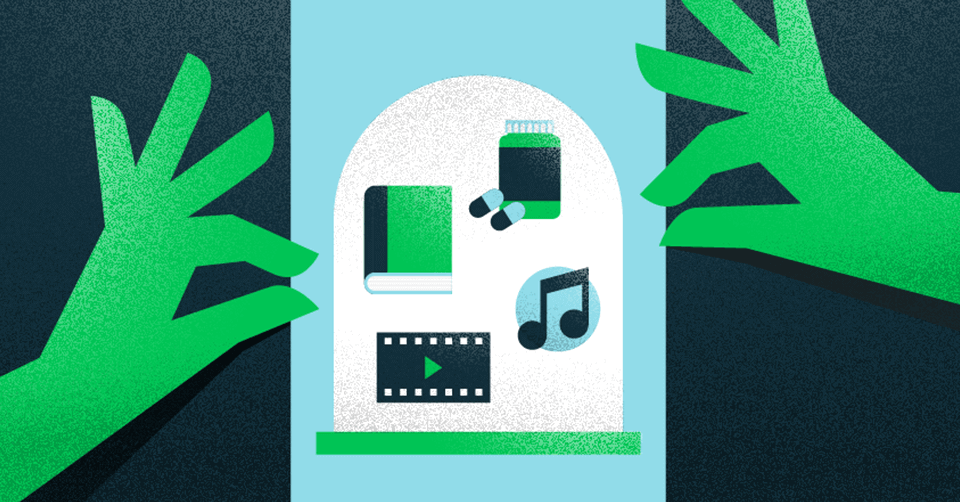Paintings, inventions, scientific breakthroughs, novels, performances, and software are different products, but they have something in common. A maker invests time, intellect, and creative energy to develop these creations, which are termed intellectual property (IP). In a real sense, they belong to the person or company responsible for creating them. They are property, like a car or watch, but the law cannot regulate their ownership and use it in the same way as physical property.
Think of intellectual property as creations of the mind. The law has developed a variety of ways to protect ownership rights to IP. It also supplies an intellectual property licensing process for transferring the right to use IP. Licensing intellectual property allows the creators of IP the right to profit from their work by controlling who uses their creations and how they use them. The creator retains ownership rights during and after the license period.
Intellectual Property: Creations of the Mind
It’s hard to imagine a society advancing without creativity and inventiveness. These qualities push an economy toward change, solve problems, and make life better for humanity. To encourage artists, scientists, and inventors to innovate, the U.S. government offers legal protection of their ownership rights, called intellectual property rights. Implicit in these rights is the notion that someone who owns a creation should have a way to authorize others to use it, control how they use it, and profit from the use.

But the range of IP is so vast that protection is not a one-size-fits-all matter. IP can be creative such as literary works, including books, stories, novels, or poetry. It can be visual artwork, including paintings, sculptures, designs, films, or videos. It can also involve the creation of logos, symbols, names, images, music, computer programs, software, or any other type of invention. Given the many types of IP, it’s no surprise creators have many ways to protect IP ownership rights.
Protecting Intellectual Property Ownership Rights
Governments use four primary methods to protect citizens’ intellectual property rights: patents, copyrights, trademarks, and trade secrets. Each applies to certain classes of IP and bestows ownership rights on the creator.
Patents
The patent system is among the first ways modern society protected intellectual property. The government uses patents to protect inventions and processes, from Thomas Edison’s electric light bulb to Tesla’s cutting-edge lithium-ion battery technology. By filing for and obtaining a patent, the inventor obtains exclusive legal rights over their product, which they can use to prevent anyone from using, copying, producing, or selling it without permission. Patents don’t last forever. Most expire after 15 to 20 years, at which time anyone can use the invention.
Copyright
Copyright protects literary, artistic, and scientific works. These works could include:
- Written works
- Photos
- Films
- Music
- Art
- Reference works
- Computer programs
- Advertisements
- Maps
- Collected data
Copyright protects works, not ideas, procedures, or concepts. In most countries, a creator gets copyright protection automatically without registration, but voluntary registration can prevent extended disputes.

Trademark
In this age of branding, trademarks have become enormously important, but they have been around for centuries. A trademark is a mark or other sign used to distinguish the goods or services of one maker from those of other enterprises. What can a company register as a trademark? This list is too long to delineate, but it includes:
- Letters
- Words
- Symbols
- Numbers
- Colors
- Photos
- Images
- Shapes
- Packaging
- Sounds
- Smells
Trademarks must be distinctive and unlike anything currently used for a type of product. To get full trademark protection, the creator must file an application for registration with the national or regional trademark office and pay the required fees.
Trade Secret
A trade secret is information that has actual or potential independent economic value because of its status as a secret. It must have value to other people or businesses who cannot legitimately obtain the information, and those holding the trade secret must make efforts to maintain its secrecy. In the United States, three acts protect trade secrets: the Uniform Trade Secrets Act, the Economic Espionage Act of 1996, and the Defend Trade Secrets Act of 2016, which amended the Economic Espionage Act to give those owning trade secrets a private right of action.
Licensing Intellectual Property
Licensing intellectual property allows the owner to sell the rights to use the IP to an entrepreneur-licensee. By extending the license, the owner permits the licensees to do what they want and need with that property. An IP licensing agreement works well for that purpose as long as both parties are sufficiently knowledgeable to define appropriate permissions. If a party lacks knowledge, pitfalls may arise, because an individual or enterprise cannot bargain for a good deal if they don’t know what they want or need.
A license agreement should be a written document and signed by all parties. While occasionally one party dictates the terms of the agreement, usually the licensor and licensee negotiate.
Many turn to licensing agents or IP attorneys to help craft an agreement that reflects their understanding and contains appropriate permissions in terms of duration, terms of use, and similar structures. These professionals can also check a draft agreement created by the parties to see if it protects a party’s interests.
Important Licensing Considerations
Licensors should keep some considerations in mind while drafting the agreement, such as these primary points that will be negotiated between the parties.
1. Rights
Each license agreement must describe the rights being transferred to the licensee, which will differ by contract depending on what the licensee wishes to do. Some licensees want to reproduce a product the licensor made; others want to distribute the product, and others may wish to adapt it to another use. The parties’ primary goal when creating a license agreement is for both to get what they want and thrive in their business ventures, not to sweep into litigation. The better the parties can spell out the rights they are transferring, the happier everyone will be. A complete description of the rights involved in the license is essential.
2. Consideration
Everything involving money and finances goes into the consideration section. This section can be complex or fairly simple depending on the consideration negotiated. If the deal is a straight monetary exchange (single sum) or involves royalties, the language can be standard and include royalty percentage, milestone payments, type of currency for payment, and the method for determining the rate of exchange between currencies. If equity is not part of the consideration for the license purchase, this section should also detail equity-ownership issues. In any event, this section should state any minimum annual payments.

3. Territory
Territory means exactly what it sounds like. It outlines where the licensee may use its license. The contract must specify the territory granted to the licensee under the license, whether it is one country or all countries. The description of territory can specify countries or portions of a country excepted from the license.
4. Exclusivity (or type)
When lawyers or license agents talk about exclusivity, they mean the people or entities who have the right granted under the license. Rights can be completely exclusive, meaning only the licensee can do the actions agreed to under the license (for example, marketing a product). They can also be co-exclusive with the licensor, meaning the party granting the license is the only other party with the same rights. Finally, the rights can be nonexclusive, meaning the licensor can sell similar rights to others. The section specifies any terms related to the exclusivity and/or non-exclusivity, and whether the rights granted are revocable or irrevocable. It may also state whether the licensee has the right to award sublicenses to others.
5. Term
This provision specifies how long the licensing agreement will last. It should include the effective date of the licensing agreement and the date the agreement ends. The contract can express the term in years, months, or days. The contract can specify a specific ending date or an event that will terminate the agreement. For example, the term could be for the life of a specific patent.
6. Assignment of rights (or rights upon bankruptcy)
A debtor’s IP can become a significant part of a bankruptcy estate. Generally, debtors can reject their executory contracts in bankruptcy. However, under Section 365(n) of the U.S. Bankruptcy Code, a non-debtor licensee of IP can opt to retain its rights to the intellectual property even if the debtor rejects the IP agreement. Parties to a licensing agreement can include a bankruptcy rights clause to specify that the IP licensed by the agreement is within the protection provided by Section 365(n). Kira Systems recently conducted a study about the impact of bankruptcy on a company’s intellectual property assets, including how distressed companies and non-debtors can benefit from understanding Section 365 of the Bankruptcy Code.
7. Infringement and indemnification
A party infringes on another’s rights when they break the licensing agreement. A licensing agreement can forgive prior infringement by the licensee and describe how to handle future infringement. A third party may also infringe on the rights of the parties. This section sets out who will bring suit and how the licensor and licensee will divide any recovery. One party may agree to make the other whole in case of third-party infringement, a process called indemnification. The contract should specify the terms of indemnification in this section.
8. Governing laws
If the owner of IP lives in California, and the licensee does business in Texas, the laws for how to interpret the contract will be different. This situation is even more complex if the parties are from different nations. Parties should agree on the governing law as part of their license negotiation process in case of a dispute.
9. Dispute resolution
If there is a major disagreement about how to interpret the agreement terms, the parties may have to take the dispute to another forum. They can agree to that forum beforehand, so they don’t need to fight about it during the dispute. The parties can choose arbitration or court litigation. Arbitration is often less expensive than court, and the parties can spell out the details in this clause.
This list isn’t all-inclusive, and parties can and sometimes should include many other provisions in an IP licensing agreement. For example, in some cases, a company may wish to include a non-disclosure provision to protect valuable and confidential information. IP licensors are responsible for enforcing their own license agreements, so it is worth working with an experienced professional when drafting an agreement.
Conclusion
Intellectual property licensing is a form of contracting. Preparing IP documents requires care, attention to detail, and experience to encourage a smooth, long-term business relationship.
